When it comes to unique and nutritious fruits native to Australia, Davidson’s plum stands out as one of the most culturally significant and nutritionally potent. Known for its rich, deep purple color and intense tart flavor, Davidson’s plum has long been valued by Indigenous Australian communities and is rapidly gaining recognition in gourmet cuisine, health products, and nutraceutical markets.
With increasing global interest in native superfoods, it’s natural to wonder: which country is the largest Davidson’s plum producer globally? The short, clear answer is Australia — and in this article, we’ll explore why, with in-depth information on the species, history, cultivation, production volumes, and market potential of this fascinating fruit.
What is Davidson’s Plum?
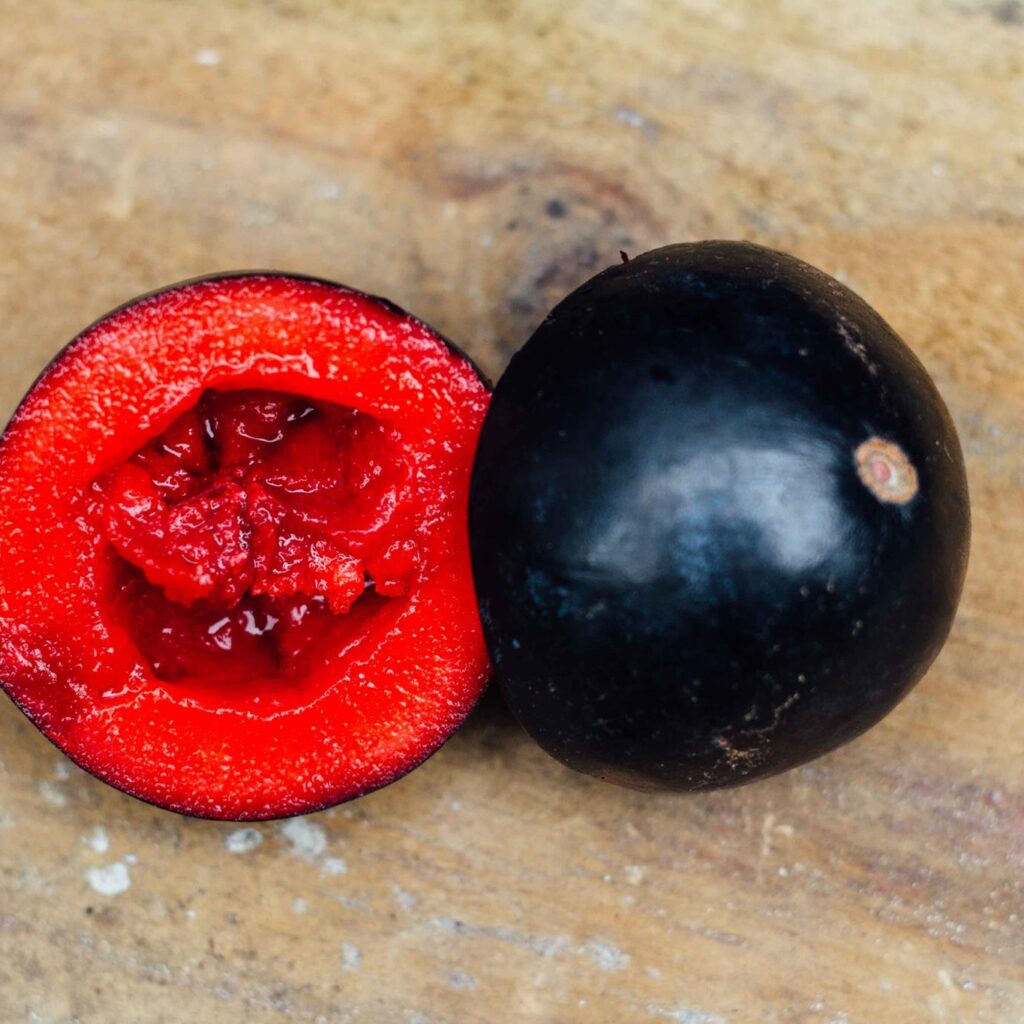
Davidson’s plum isn’t a true plum of the Prunus genus but belongs to the genus Davidsonia, a small group of rainforest trees endemic to Australia. There are three main species:
- Davidsonia jerseyana — Native to northern New South Wales (NSW)
- Davidsonia pruriens — Found in tropical rainforests of Queensland
- Davidsonia johnsonii — A rare species native to a few pockets of subtropical Queensland
The trees produce dark purple, sour, and antioxidant-rich fruit, traditionally used as food and medicine by Indigenous Australians for generations. The fruit’s high nutritional profile, particularly its exceptional anthocyanin and vitamin C content, has made it a sought-after ingredient in health foods, beverages, and cosmetics.
Historical and Cultural Significance
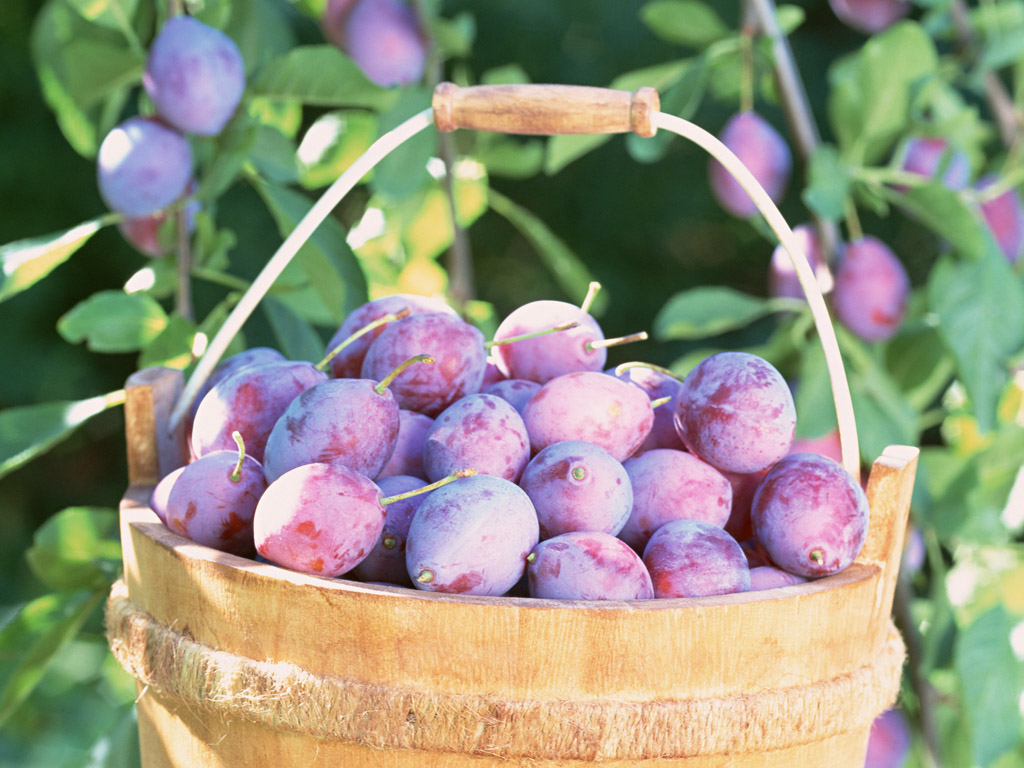
For thousands of years, Davidson’s plum was gathered in the wild and consumed fresh or preserved by Indigenous communities in Australia. It was not only a valuable source of nutrition but also a medicinal plant. Traditionally, it was used to treat stomach ailments and skin infections.
European settlers named the fruit after J.E. Davidson, who first documented the species in the 19th century. Its bold color and intense sourness intrigued early botanists and food enthusiasts, but it remained relatively obscure outside Indigenous diets until the late 20th century.
Where is Davidson’s Plum Grown Today?
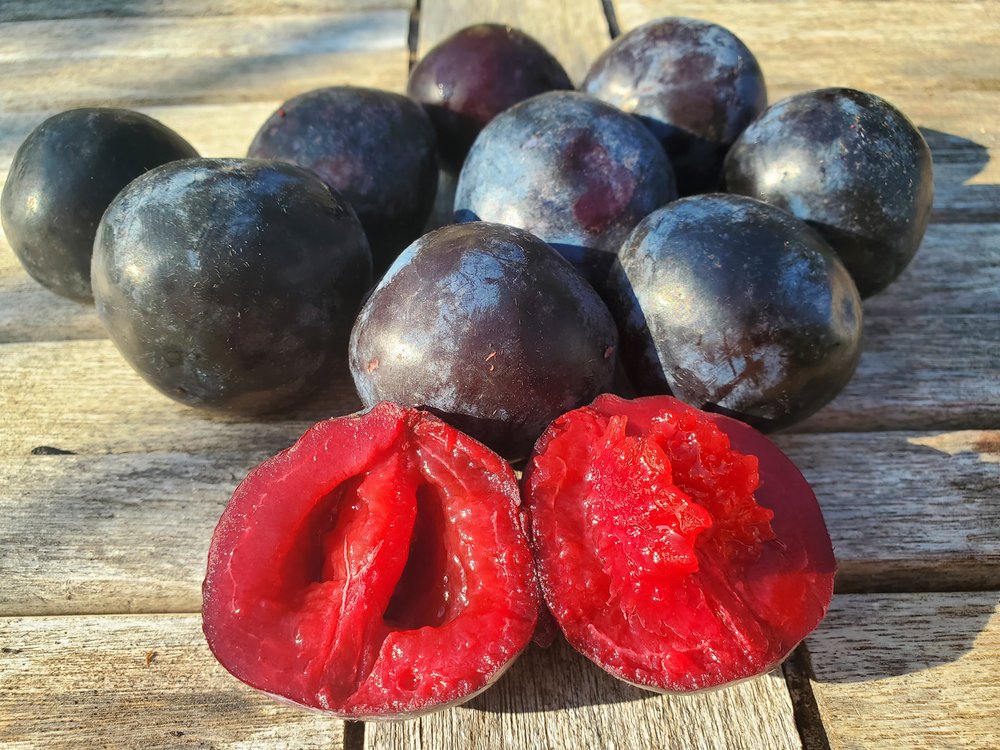
Australia: The Undisputed Leader
Australia is the largest — and virtually the only — commercial producer of Davidson’s plum in the world. Given the fruit’s natural distribution in Australian rainforests and its classification as an endemic species, no other country has commercial-scale plantations of Davidson’s plum.
Key growing regions:
- Northern New South Wales: Particularly around Mullumbimby and Byron Bay
- Tropical North Queensland: Near Cairns, Innisfail, and the Atherton Tablelands
- Subtropical South East Queensland
These areas provide the warm, moist, and shaded conditions that Davidson’s plum trees thrive in.
Why Not Other Countries?
Although some experimental plantings have been attempted in similar climates like Hawaii and parts of Southeast Asia, no other country has established significant commercial production. Factors limiting international cultivation include:
- The species’ strict climatic preferences
- Legal and ecological restrictions on exporting native Australian plants
- The absence of large-scale propagation outside Australia
Thus, Australia accounts for nearly 100% of the global Davidson’s plum harvest.
Davidson’s Plum Production in Australia
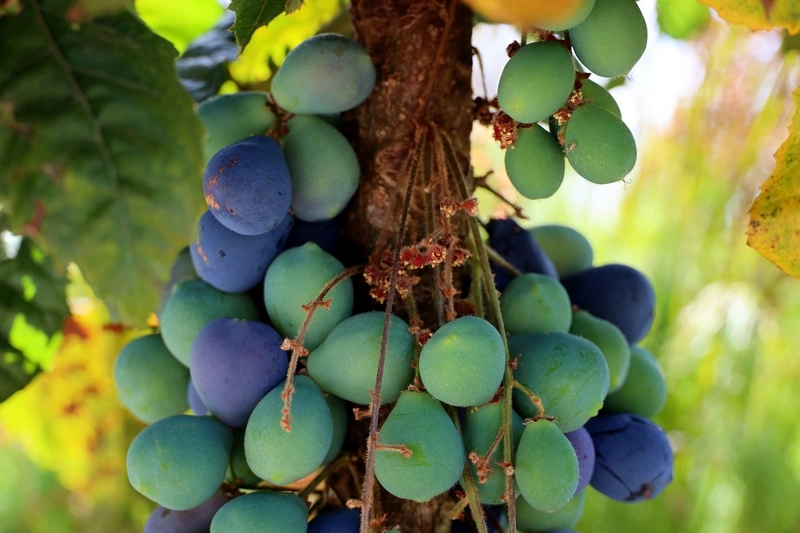
While official nationwide production statistics for Davidson’s plum are scarce (as it’s still a niche crop), available estimates suggest that the annual Australian harvest exceeds 150-200 tonnes, with plantations gradually expanding due to increasing market demand.
Major producers:
- Rainforest Heart (North Queensland) — one of Australia’s largest growers
- Bushfood Farms
- Native Oz Bushfoods
- Numerous small-scale organic growers in New South Wales and Queensland
Most of the harvest is processed domestically for:
- Purees and jams
- Dried fruit
- Nutraceutical powders
- Health beverages and syrups
- High-antioxidant skincare products
Cultivation and Harvesting Practices
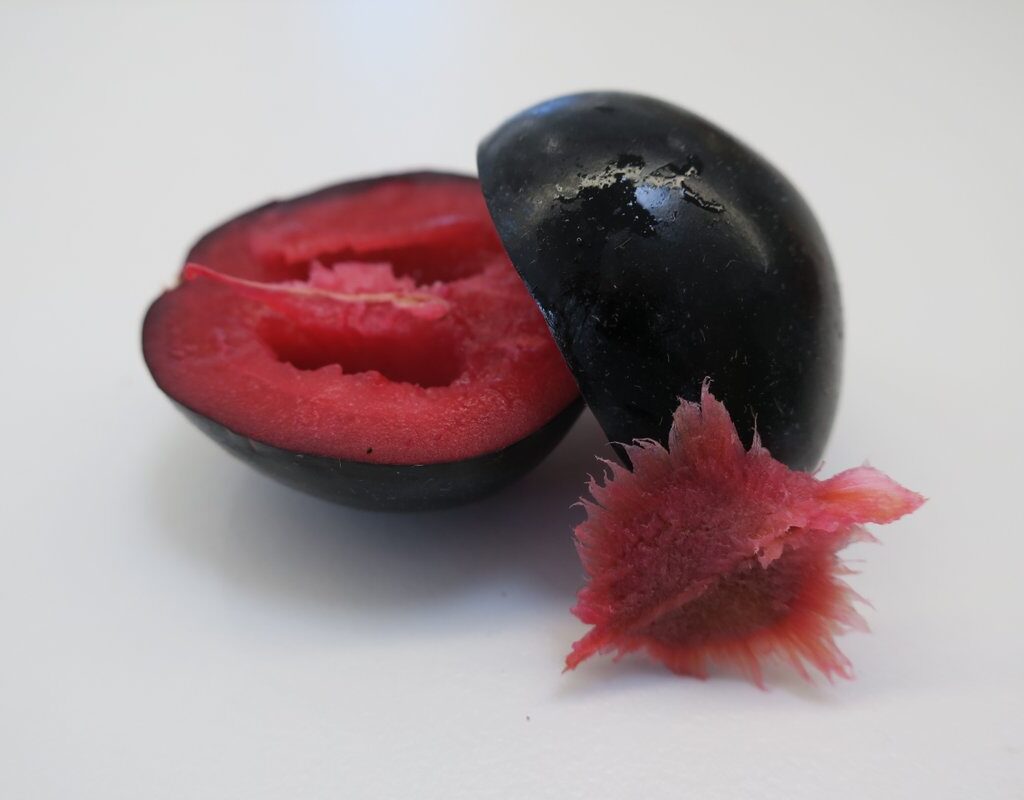
Davidson’s plum trees prefer:
- Humid, subtropical to tropical climates
- Shaded or partially shaded locations
- Rich, well-draining soil with high organic matter
The trees start fruiting 3–5 years after planting and produce fruit that grows directly from the trunk or large branches — a striking visual feature known as cauliflory.
Harvest season:
- Davidsonia jerseyana: December to February (summer)
- Davidsonia pruriens: January to March (late summer)
- Fruits are hand-picked to avoid bruising and immediately chilled for processing.
Nutritional and Health Benefits
Davidson’s plum is considered a nutritional powerhouse:
- Extremely high in anthocyanins — antioxidants responsible for the fruit’s deep purple color and known for their anti-inflammatory and heart-protective effects.
- Rich in vitamin C, potassium, and magnesium
- Contains lutein, folate, and zinc
- Exhibits anti-inflammatory, antimicrobial, and anti-aging properties
Due to these health benefits, the fruit is widely used in:
- Nutritional supplements
- Skincare and cosmetic formulations
- Natural food colorants
- Functional foods
Global Demand and Export Market
While Davidson’s plum is grown almost exclusively in Australia, the export market for Davidson’s plum products is steadily growing, especially in countries with a strong appetite for natural and functional health foods, such as:
- Japan
- South Korea
- United States
- Germany
- United Kingdom
Exports primarily include frozen puree, dried powders, and nutraceutical-grade extracts used in health beverages, smoothies, yogurts, and cosmetics.
Future Outlook for Davidson’s Plum Production
Australia’s production of Davidson’s plum is expected to increase in the coming years due to:
- Rising global interest in native Australian superfoods
- Expansion of commercial plantations in Queensland and New South Wales
- Increasing demand for natural antioxidants in the health and wellness industry
Several agricultural cooperatives and bushfood growers’ associations are working to promote sustainable farming of Davidson’s plum and other native species.
Challenges:
- Managing pests (like fruit flies)
- Sensitivity to temperature extremes
- Limited genetic diversity in commercial stock
- Navigating export regulations for native species
Despite these hurdles, Davidson’s plum remains one of Australia’s most promising native bushfoods for global markets.
Conclusion
After reviewing the history, cultivation, and commercial production landscape of Davidson’s plum, it’s clear that Australia is the largest and only significant producer of Davidson’s plum globally. From its deep Indigenous roots to its growing reputation in international health food and cosmetic markets, this distinctly Australian fruit is both a cultural treasure and a valuable agricultural product.
While experimental plantings in similar climates outside Australia exist, none have developed into commercial industries. As a result, Australia remains the exclusive global supplier of Davidson’s plum, with production centered in New South Wales and Queensland’s subtropical and tropical regions.
With its rich nutritional profile and increasing market demand, Davidson’s plum has a bright future — and Australia will continue to lead the world in its cultivation and commercial development.

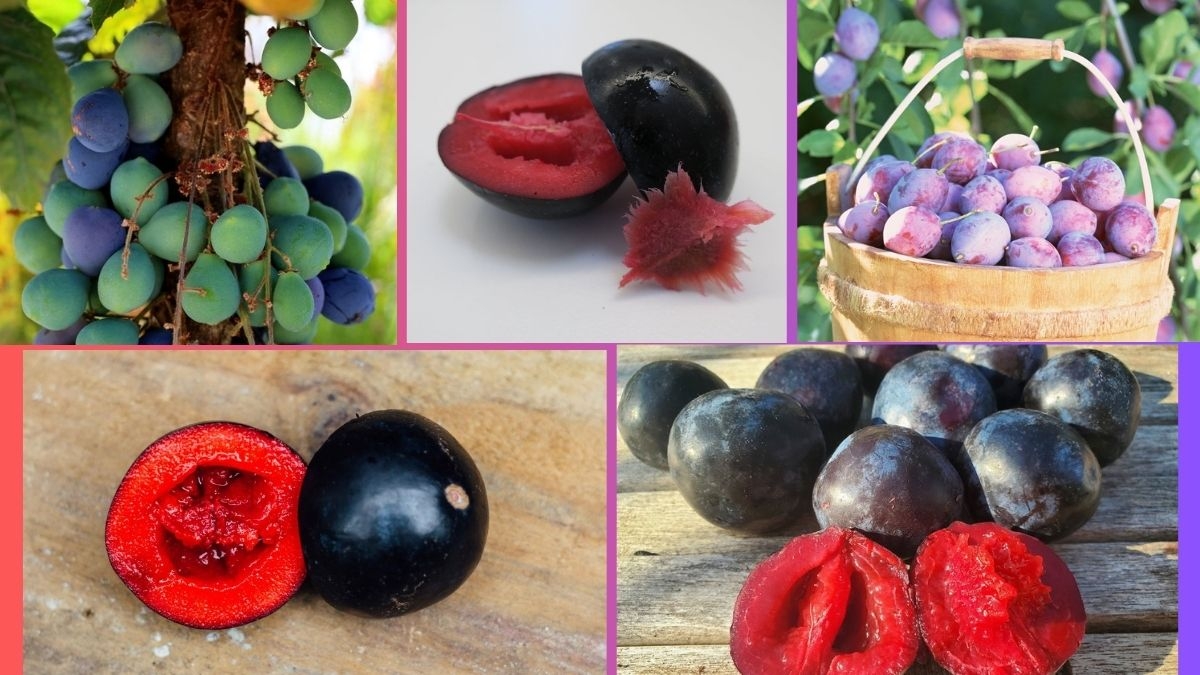



Leave A Comment